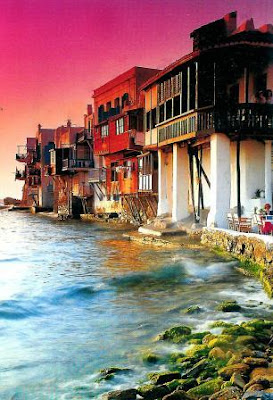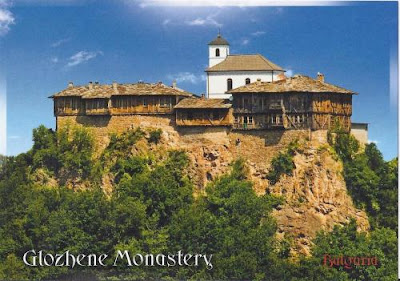My very 1st card from Azerbaijan and at the same time a new Unesco place in my collection. The Walled City of Baku with the Shirvanshah's Palace and Maiden Tower were added to the Unesco WHS list in 2000.
The card was sent by Manu.
Azerbaijan is the largest country in the Caucasus region located at the crossroads of Western Asia and Eastern Europe.
Built on a site inhabited since the Palaeolithic period, the Walled City of Baku reveals evidence of Zoroastrian, Sassanian, Arabic, Persian, Shirvani, Ottoman and Russian presence in cultural continuity. The Inner City (Icheri Sheher) has preserved much of its 12th-century defensive walls. The 12th-century Maiden Tower (Giz Galasy) is built over earlier structures dating from the 7th to 6th centuries BC, and the 15th-century Shirvanshah's Palace is one of the pearls of Azerbaijan architecture.
The Inner Walled City is one of the few surviving medieval towns in Azerbaijan. It retains the characteristic features of a medieval town, such as the labyrinth of narrow streets, congested buildings and tiny courtyards. The walls of the old town, which still survive on the western and northern sides, were built by Menutsshochr Shah in the 12th century and were repaired in the 19th century. The narrow streets are lined with houses dating from the late 18th century onwards, but also contain earlier monuments, mostly concentrated in the lower, seaward, side of the town.
The Maiden Tower is located in the south-east part of Icheri Sheher; this unique monument of Azerbaijan architecture was built in two periods. It is an astonishing cylindrical structure, rising to eight storeys. Each storey is roofed by a shallow vault with a central aperture. The bottom three storeys are thought to date to as early as the 7th or 6th centuries BC and to have been an astronomical observatory or fire temple. Evidence for this comes from the existence of a shaft, visible at the back of niches in the second and third storeys. This appears to have been designed to channel natural gas to provide fuel for an eternal flame. The main part of the tower is circular in plan, but with a long solid projection to the east which points towards sunrise at the equinoxes. The floors are connected by staircases built into the walls, and are lit by means of narrow windows. - in: http://whc.unesco.org/en/list/958














.jpg)


.jpg)















.jpg)









.jpg)

.jpg)



.jpg)